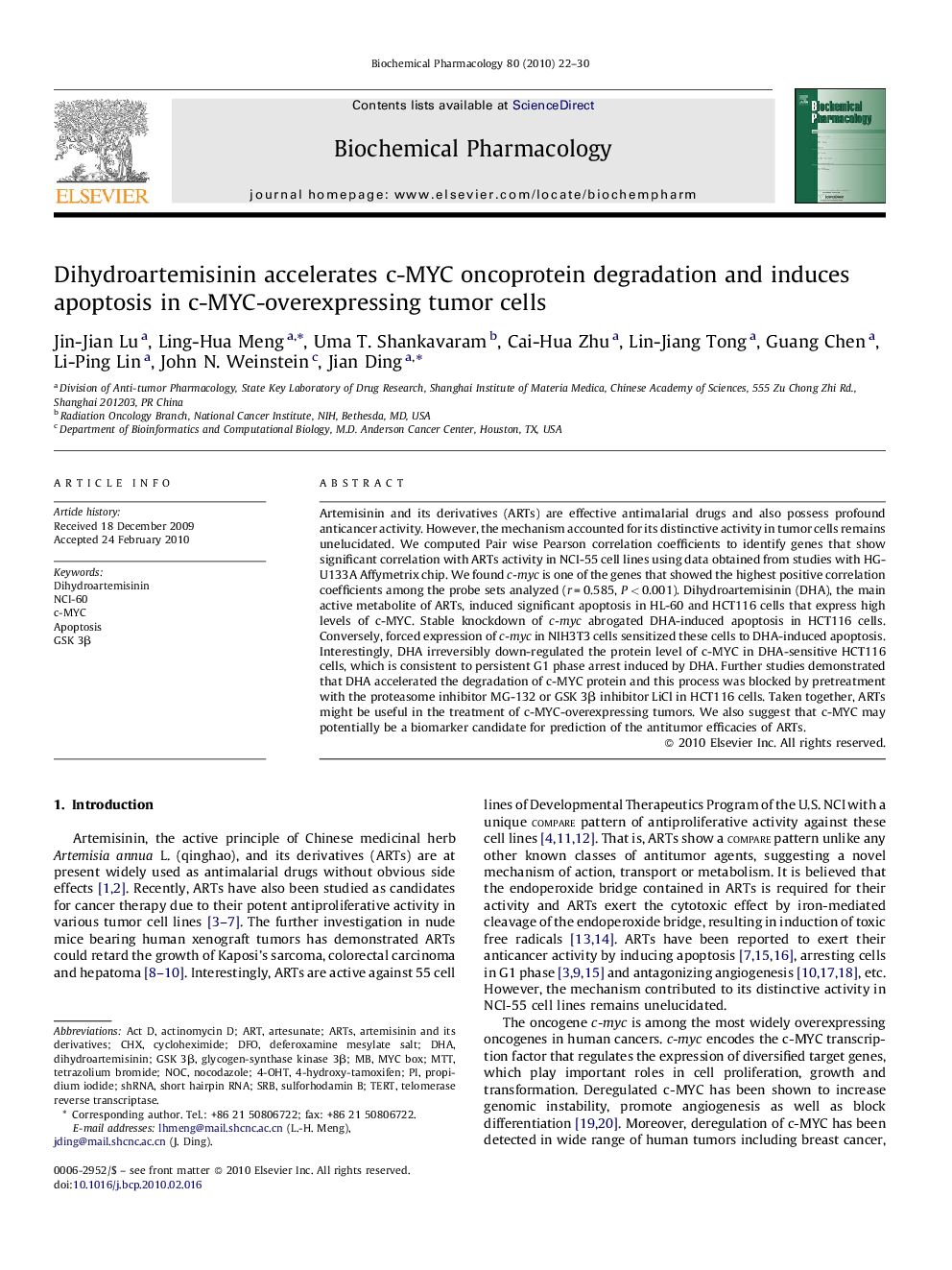| Article ID | Journal | Published Year | Pages | File Type |
|---|---|---|---|---|
| 2513492 | Biochemical Pharmacology | 2010 | 9 Pages |
Artemisinin and its derivatives (ARTs) are effective antimalarial drugs and also possess profound anticancer activity. However, the mechanism accounted for its distinctive activity in tumor cells remains unelucidated. We computed Pair wise Pearson correlation coefficients to identify genes that show significant correlation with ARTs activity in NCI-55 cell lines using data obtained from studies with HG-U133A Affymetrix chip. We found c-myc is one of the genes that showed the highest positive correlation coefficients among the probe sets analyzed (r = 0.585, P < 0.001). Dihydroartemisinin (DHA), the main active metabolite of ARTs, induced significant apoptosis in HL-60 and HCT116 cells that express high levels of c-MYC. Stable knockdown of c-myc abrogated DHA-induced apoptosis in HCT116 cells. Conversely, forced expression of c-myc in NIH3T3 cells sensitized these cells to DHA-induced apoptosis. Interestingly, DHA irreversibly down-regulated the protein level of c-MYC in DHA-sensitive HCT116 cells, which is consistent to persistent G1 phase arrest induced by DHA. Further studies demonstrated that DHA accelerated the degradation of c-MYC protein and this process was blocked by pretreatment with the proteasome inhibitor MG-132 or GSK 3β inhibitor LiCl in HCT116 cells. Taken together, ARTs might be useful in the treatment of c-MYC-overexpressing tumors. We also suggest that c-MYC may potentially be a biomarker candidate for prediction of the antitumor efficacies of ARTs.
Graphical abstractFigure optionsDownload full-size imageDownload as PowerPoint slide
